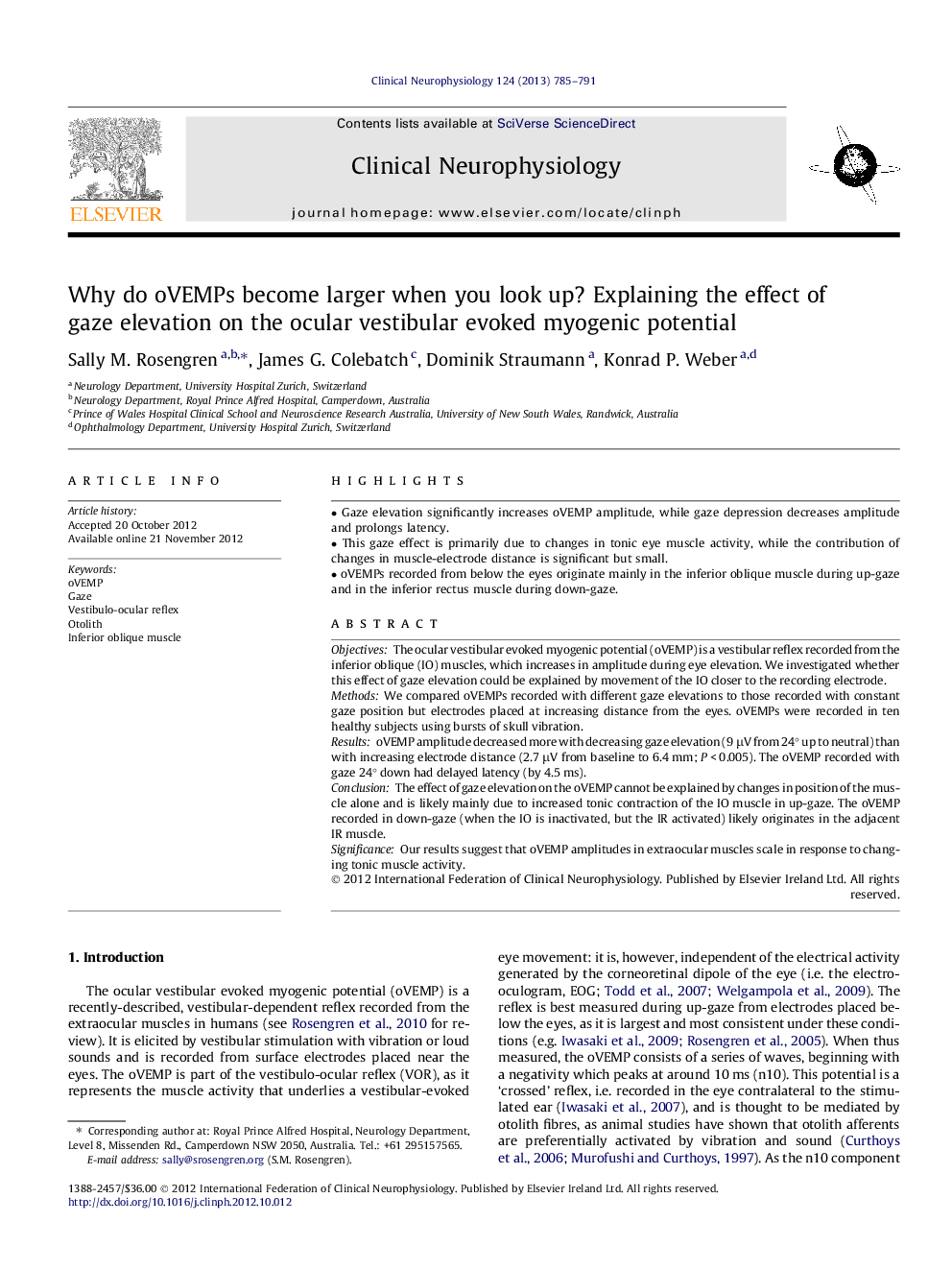| Article ID | Journal | Published Year | Pages | File Type |
|---|---|---|---|---|
| 3044189 | Clinical Neurophysiology | 2013 | 7 Pages |
ObjectivesThe ocular vestibular evoked myogenic potential (oVEMP) is a vestibular reflex recorded from the inferior oblique (IO) muscles, which increases in amplitude during eye elevation. We investigated whether this effect of gaze elevation could be explained by movement of the IO closer to the recording electrode.MethodsWe compared oVEMPs recorded with different gaze elevations to those recorded with constant gaze position but electrodes placed at increasing distance from the eyes. oVEMPs were recorded in ten healthy subjects using bursts of skull vibration.ResultsoVEMP amplitude decreased more with decreasing gaze elevation (9 μV from 24° up to neutral) than with increasing electrode distance (2.7 μV from baseline to 6.4 mm; P < 0.005). The oVEMP recorded with gaze 24° down had delayed latency (by 4.5 ms).ConclusionThe effect of gaze elevation on the oVEMP cannot be explained by changes in position of the muscle alone and is likely mainly due to increased tonic contraction of the IO muscle in up-gaze. The oVEMP recorded in down-gaze (when the IO is inactivated, but the IR activated) likely originates in the adjacent IR muscle.SignificanceOur results suggest that oVEMP amplitudes in extraocular muscles scale in response to changing tonic muscle activity.
► Gaze elevation significantly increases oVEMP amplitude, while gaze depression decreases amplitude and prolongs latency. ► This gaze effect is primarily due to changes in tonic eye muscle activity, while the contribution of changes in muscle-electrode distance is significant but small. ► oVEMPs recorded from below the eyes originate mainly in the inferior oblique muscle during up-gaze and in the inferior rectus muscle during down-gaze.
